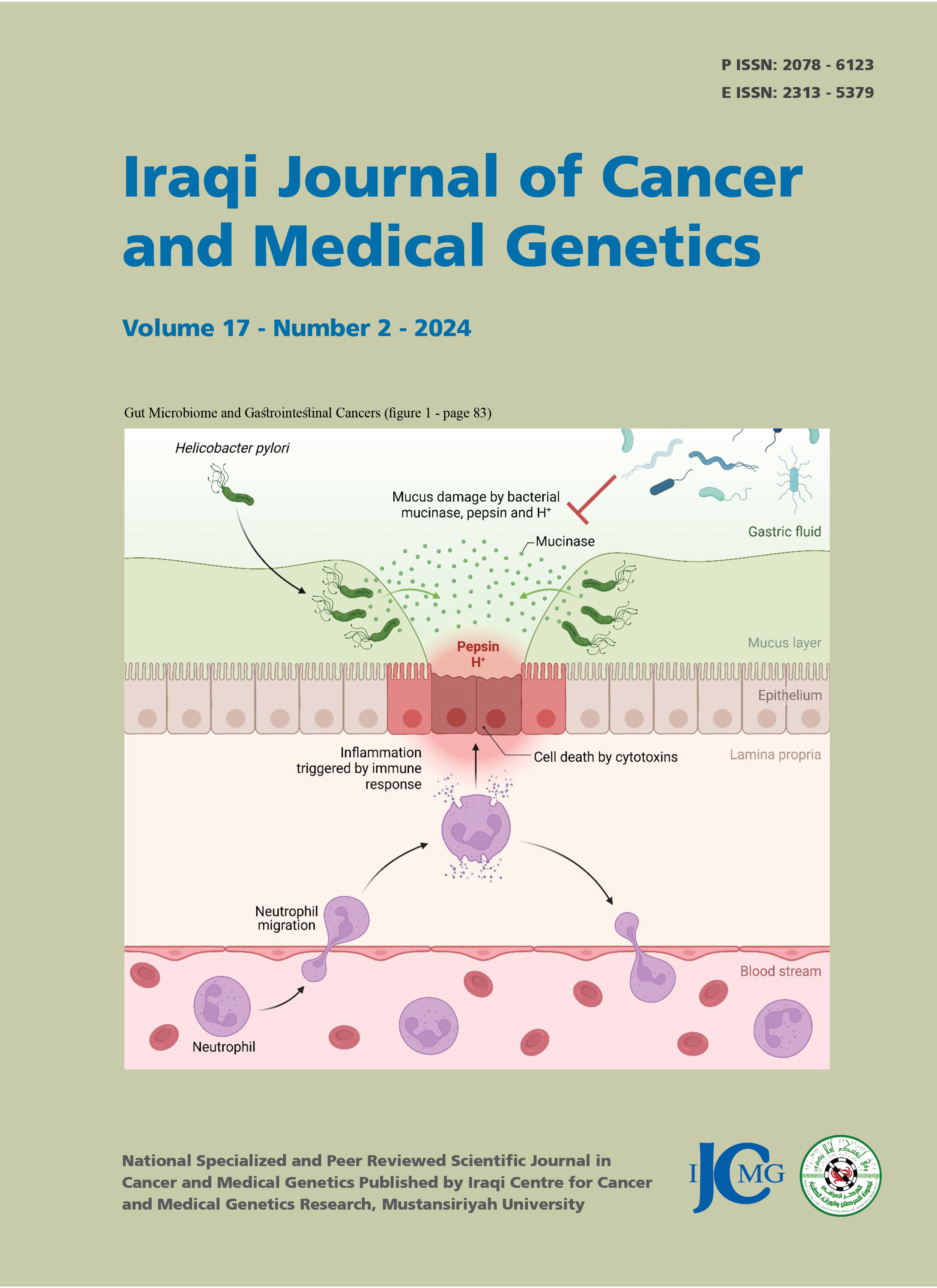Correlations of CD44 and CD133 with the grade and subtypes of invasive ductal carcinoma
Expression of CD44 and CD133 in invasive ductal carcinoma
DOI:
https://doi.org/10.29409/ijcmg.v17i2.365Keywords:
invasive ductal carcinoma, cancer stem cell, breast cancer subtypesAbstract
Breast cancer (BC) is the most commonly diagnosed cancer and the main cause of mortality among women worldwide. Cancer stem cells are subpopulations of cancer cells characterized by self-renewal, tumorigenesis, maintenance of cancer heterogeneity, and metastasis. The current study was designed to identify the presence of cancer stem cells (CSCs) within tumor tissue and their role in metastasis and to determine the relationships between the expression of these markers and the grade and subtype of invasive ductal carcinoma (IDC). Sixty paraffin blocks from patients with IDC, where 49 blocks were from patients without metastasis (M- group), and 11 blocks from patients with distant metastasis (M+ group), were used. All cases were subjected to histopathological and immunohistochemistry investigations to determine the tumor grade and BC subtypes, as well as to identify the presence of CSCs on the basis of the expression of CD44 and CD133. IHC revealed that the subtype (luminal A/B) had the highest percentage (90.9%), triple-negative subtype (9.1%) and no HER2-enriched subtype (0%) in the M+ group compared with the M- group, and this difference was significant. Furthermore, IHC revealed the presence of CSCs within the tumors of both groups, but the odds ratios (ORs) of CD44 and CD133 revealed that these markers are 3.1 and 1.29 times more likely to be expressed in metastatic cases than in other cases without metastasis. There was no significant correlation between the expression of stem cell (CD) markers and tumor grade, but the expression of CD44 and CD133 was significantly lower in the triple-negative IDC subtype than in the luminal IDC subtype (r=-0.3424, P=0.007; and r=-0.2787, P=0.031, respectively). Female patients with the luminal A subtype and positive expression of CD44 and CD133 are more likely to experience metastasis.
Downloads
Published
Issue
Section
License
Copyright (c) 2024 Iraqi Journal of Cancer and Medical Genetics

This work is licensed under a Creative Commons Attribution-NonCommercial 4.0 International License.






